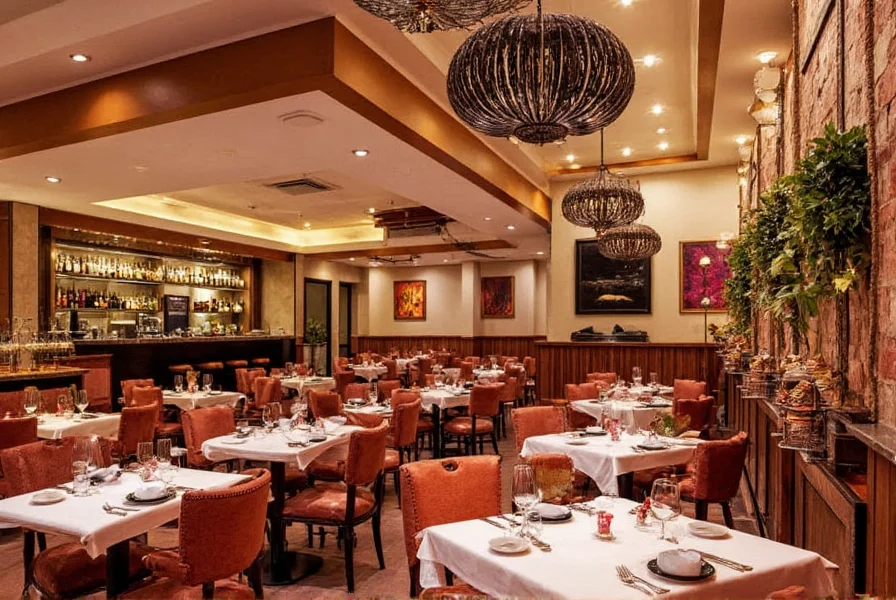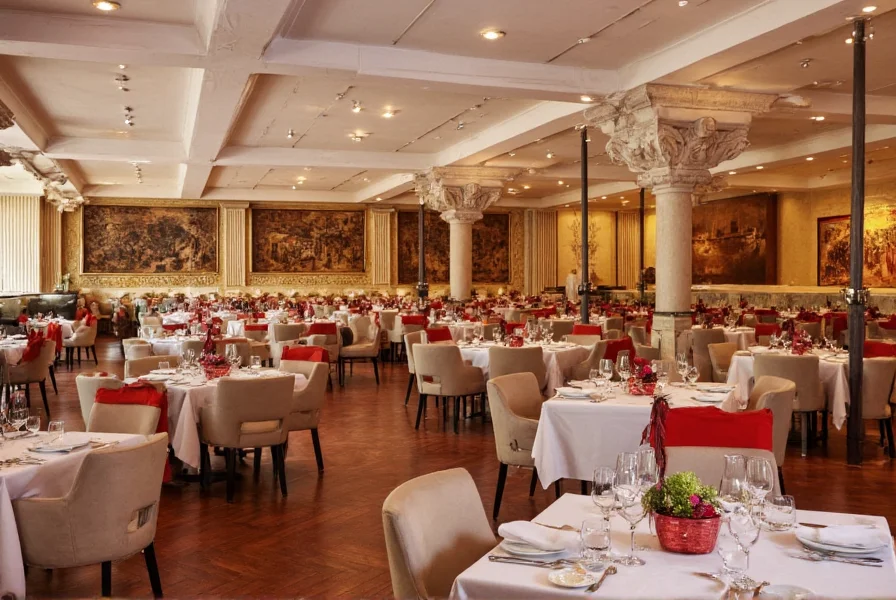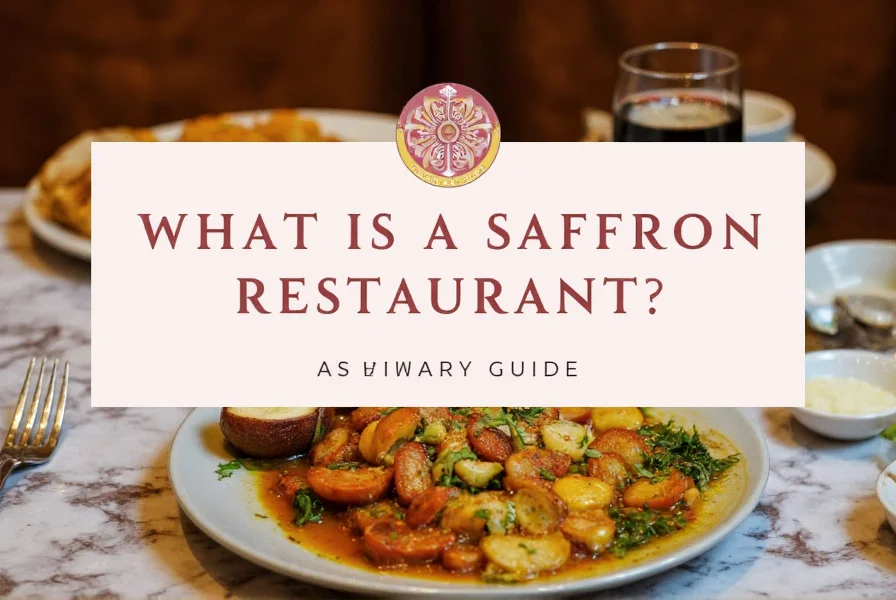When searching for saffron restaurant information, you're likely seeking details about cuisine, ambiance, and what makes these dining establishments unique. Saffron, harvested from the crocus flower stigma, ranks as the world's most expensive spice by weight due to its labor-intensive harvesting process. This precious ingredient lends a distinctive golden hue and subtle floral notes to dishes, creating a signature element in many saffron-focused restaurants.
Understanding Saffron's Culinary Significance
Saffron's presence in a restaurant's name signals a culinary focus on dishes where this golden spice plays a starring role. In Indian cuisine, saffron appears prominently in:
- Moghlai biryanis and pulaos
- Shahi paneer and korma sauces
- Sweet desserts like kulfi and ras malai
- Traditional Kashmiri dishes
Middle Eastern and Persian restaurants featuring saffron often highlight:
- Taftan and barbari breads
- Chelow kababs with saffron rice
- Saffron-infused stews (khoresht)
- Traditional saffron tea preparations
| Cuisine Type | Signature Saffron Dishes | Price Range Indicator |
|---|---|---|
| Indian | Saffron biryani, Kashmiri pulao | Moderate to high |
| Persian | Tahdig, zereshk polo | Moderate |
| Middle Eastern | Maqluba, saffron rice | Moderate |
What Defines an Authentic Saffron Restaurant Experience
True saffron restaurants distinguish themselves through several key elements that go beyond merely including saffron on the menu. The most authentic establishments demonstrate:
Ingredient Quality: They use genuine Iranian or Kashmiri saffron threads rather than artificial coloring or saffron substitutes. High-end saffron restaurants often display their saffron source and may even offer saffron tasting experiences.
Culinary Expertise: Chefs with specialized knowledge of saffron preparation techniques ensure proper infusion methods. Saffron requires careful handling—too much creates bitterness, while too little yields minimal flavor impact.

Evaluating Saffron Restaurant Menus
When reviewing menus at potential saffron restaurants, look for specific indicators of authenticity:
- Menu specificity: Authentic establishments describe saffron usage rather than just listing it as an ingredient. Look for phrases like "infused with hand-stranded saffron" or "saffron from Pampore, Kashmir."
- Regional specialization: The best saffron restaurants focus on specific regional cuisines where saffron features prominently rather than offering generic "Indian" menus.
- Seasonal offerings: High-quality saffron restaurants often feature seasonal saffron-specialty dishes that align with saffron harvest cycles.
Avoid establishments that merely include "saffron" in their name without substantive menu integration. True saffron restaurants make this spice a central element of their culinary identity rather than a marketing gimmick.
Cultural Context of Saffron in Dining
Saffron carries deep cultural significance across multiple culinary traditions. In Persian culture, saffron represents hospitality and celebration, often featured in dishes served during Nowruz (Persian New Year). Indian culinary traditions associate saffron with royalty and special occasions, particularly in Mughlai cuisine developed for emperors.
Understanding this cultural context enhances the dining experience at authentic saffron restaurants. These establishments often incorporate traditional serving methods, such as presenting saffron rice in copper degs (pots) or offering saffron-infused beverages as part of the welcome ritual.

What to Expect During Your Visit
Visiting a quality saffron restaurant typically involves:
- Ambiance: Many feature decor reflecting the cultural origins of their cuisine, with rich textiles, traditional music, and warm lighting that complements saffron's golden tones.
- Service approach: Staff knowledgeable about saffron's role in dishes can explain preparation methods and regional significance.
- Dining progression: Authentic experiences often follow traditional meal structures, beginning with saffron-infused appetizers and progressing to main courses featuring the spice prominently.
When researching saffron restaurant near me, check whether the establishment demonstrates genuine expertise with this specialty ingredient through detailed menu descriptions and knowledgeable staff.
Finding Quality Saffron Dining Experiences
To identify authentic saffron restaurants rather than those merely using the name for marketing:
- Look for restaurants where saffron appears in multiple menu sections, not just one or two dishes
- Check if the restaurant explains their saffron sourcing on menus or websites
- Seek establishments with chefs who have specific regional culinary training
- Read reviews mentioning saffron-specific dishes rather than general restaurant praise
The most authentic saffron restaurant experience centers around this precious spice as a culinary cornerstone rather than a superficial addition. These restaurants typically charge premium prices reflecting saffron's cost, but deliver distinctive flavor profiles you won't find elsewhere.
Frequently Asked Questions
What type of cuisine do saffron restaurants typically serve?
Saffron restaurants typically specialize in Indian, Persian, or Middle Eastern cuisine where saffron is a signature ingredient. These establishments feature dishes like biryanis, rice pilafs, and desserts infused with saffron's distinctive aroma and golden color.
How can I tell if a saffron restaurant uses genuine saffron?
Authentic saffron restaurants typically describe their saffron source (like Iranian or Kashmiri), use specific preparation methods, and feature saffron prominently across multiple menu items. They avoid artificial coloring and can explain saffron's role in dishes. Genuine saffron imparts a distinctive floral aroma and golden hue rather than just yellow coloring.
Why are saffron restaurants often more expensive?
Saffron ranks as the world's most expensive spice by weight due to its labor-intensive harvesting process. Authentic saffron restaurants use significant quantities of genuine saffron, which substantially increases ingredient costs. The premium pricing reflects both the spice's cost and the culinary expertise required to use it properly.
What are the most common saffron dishes to expect?
Common saffron dishes include biryanis and pulaos (Indian cuisine), zereshk polo (Persian rice with barberries), saffron-infused breads like taftan, and desserts such as saffron kulfi or Persian saffron rice pudding. Many establishments also offer saffron tea or saffron-infused beverages as part of the traditional dining experience.
Does every restaurant with 'saffron' in its name actually specialize in saffron dishes?
No, some restaurants use 'saffron' in their name as a marketing term without substantial saffron integration in their menu. Authentic saffron restaurants make this spice a central culinary element across multiple dishes rather than just including it in one or two menu items. Check whether the menu demonstrates genuine expertise with saffron preparation techniques and regional applications.











 浙公网安备
33010002000092号
浙公网安备
33010002000092号 浙B2-20120091-4
浙B2-20120091-4